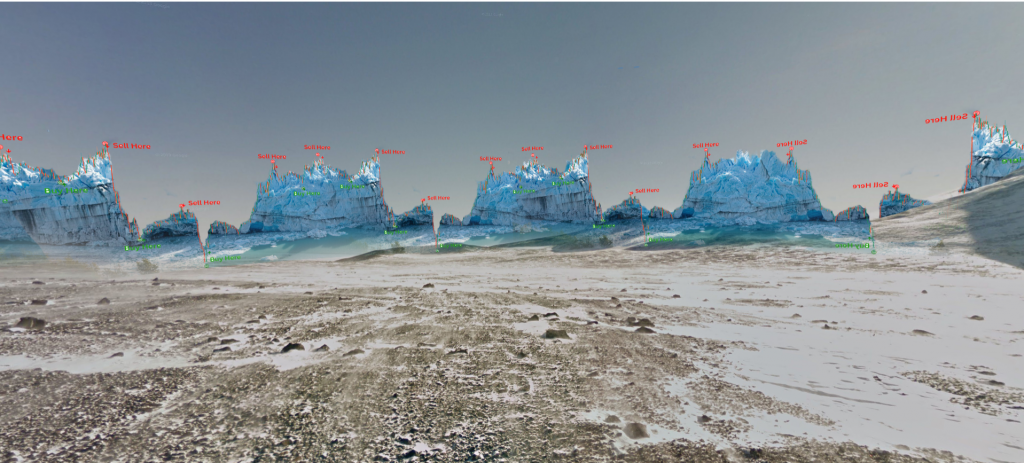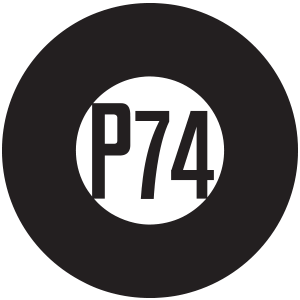
Photo: Tajda Stiplovšek Jug
28 March – 23 April 2024
P74 Gallery
>exhibition view @P74 Gallery
_____
You are cordially invited to attend the opening of the exhibition Treida by Tajda Stiplovšek Jug on Thursday, 28 March 2024, between 7pm and 9pm at the P74 Gallery in Ljubljana.
_____
Winters have been noticeably shorter and milder for some time now, and the lack of snow has become a constant. On the one hand, the warnings regarding global warming emphasise the importance of winter. Still, nostalgia for snow can also be observed in the context of social customs and popular culture. The last time snow fell for Christmas in Slovenia was in 2007. Tajda Stiplovšek Jug hypothesises that in the future, snow may become either a rarity, a kind of historical substance, or a luxury material fit for trading as a raw material. Treida is the second in a series of projects in which Stiplovšek Jug deals with the importance of snow regarding the consequences of global warming and equips the snow with new roles. Treida presents the idea of an online platform where snow is traded as raw material, combining economics and ecology.
The title »Treida« consists of the word »trade« and the artist’s name (Tajda). For several years, Stiplovšek Jug has been following the widespread culture of investing and trading, also in connection to individualistic lifestyles: investments are (can be) made in almost every area of an individual’s life, but only where they will pay off. Following the example of determining the value of certain natural raw materials, she imagines a fictitious market for the sale of co-owned shares of snow that she has been collecting and storing in the freezer for a few years now. Various elements of the project will be placed on a spatially designed gallery layout: interactive projection, stored samples of »raw material« (freezers with snow), and the online platform user’s working environment. The interactive projection is visually defined by a panoramic view of the Antarctic landscape found on Google Earth. The glacial landscape imitating its »natural« size gives insight into various indicators. Here, the artist uses the shape of a glacier as a graph since this type of data visualisation is familiar to people. Snow samples in freezers are stored in different containers (depending on whether the snow is fresh, old, clean, etc.) and marked with primary data (year, quantity), which draws them closer to the function of museum artefacts. Pseudoscientific labelling can also be understood as a need to give the impression of expertise, as apparent complexity, to convince unskilled individuals to buy. On the other hand, the space in which the user’s working environment is recreated aims to show who the potential user of the platform is and what issues they deal with. Are they speculators looking for a quick profit or safe investors who believe in long-term and safe investments? Or are they individuals, institutions and companies who see this as an opportunity to develop specific branches of tourism where a unique experience is for sale?
The video played on the computer simulates the user’s activity, who, among other things, examines various indicators that, in addition to the vocal representation of value movements, show the influence of different external factors. Monitoring the weather and climate changes is, without a doubt, essential for investors trading with snow. The problem posed by snow storage is energy consumption, which is why both external factors and ethical concerns inhibit the growth of this market. Also exhibited are the alleged personal items of the platform user, which emphasise the inevitable personal history, experiences and values, which (may) also represent an important factor in decision-making. Despite the unmistakable environmental questions in the project, Tajda Stiplovšek Jug does not focus on the consequences of the disappearance of snow. She is interested in researching human value-making processes. After all, what would be the relationship between the snow that she stores and that of Antarctica, the relationship between the human assigned value and that which conditions the existence of humanity? Could her snow become more valuable?
_____
The exhibition is part of the Open Term for a Young Intermedia Artist series that the P.A.R.A.S.I.T.E. Institute has been running since 2016. It represents the first solo presentation of a young artist in Ljubljana.
_____
Tajda Stiplovšek Jug (1999) works in the field of intermedia art. She holds a BA in Sculpture (2022) from the Academy of Fine Arts and Design in Ljubljana, where she is now completing her master’s degree. As part of the Erasmus exchange program, she studied at universities in Linz and Leipzig. She is interning at the Ideal Art Space Gallery in Leipzig as part of the Erasmus program. Along with participating in various projects and group and solo exhibitions organised by the Academy, Stiplovšek Jug has participated in group exhibitions at the Alkatraz Gallery, DLUM Gallery (Maribor Fine Artists Society), and in Tržič. Her work is displayed in a solo exhibition at the Tkalka Gallery in Maribor. Her spatial installations employ natural and technological materials and objects to show their function and the relationship of humans to the environment.

